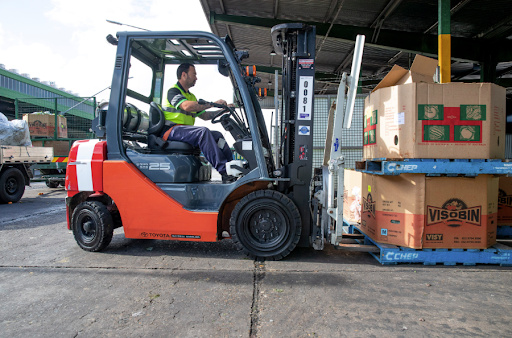Walk into a warehouse in Western suburbs, or watch a construction site near Barangaroo, and you’ll notice the same machine weaving quietly in the background. Compact, strong, always in motion—the forklift. We don’t talk about it much, but without forklifts in Sydney, the city’s logistics system would buckle almost instantly. What looks like a simple machine is, in truth, a silent partner in trade, construction, and even the groceries that appear neatly stacked on supermarket shelves.
Why Forklifts Are More Than Just Load Lifters
Most people think of forklifts as boxes-on-forks movers. Functional, nothing more. But the truth is more interesting. In Sydney, forklifts aren’t simply carrying loads—they’re reducing labour shortages. Logistics hubs across western Sydney have been struggling for workers; shifting tonnes of stock by hand isn’t an option anymore. Forklifts step in, not just to save time, but to keep supply chains functioning when the workforce falls short.
They also protect against injury. Anyone who’s spent time stacking pallets knows the toll on the body. Forklifts don’t just speed the job up—they take on the strain that would otherwise land workers in hospital. And that, for businesses under pressure, matters more than people realise.
The Types That Actually Dominate in Sydney
Articles often list forklift types like a catalogue, but let’s talk about what’s really used here. Distribution centres near Eastern Creek? They rely heavily on reach trucks—because aisles are narrow and storage goes upwards, not sideways. At Port Botany? Heavy-duty diesel forklifts dominate, lifting containers where electric models simply don’t have the muscle. Out at construction sites in Parramatta or Green Square, rough-terrain forklifts with chunky tyres rule, because smooth floors don’t exist there.
It’s not about knowing every forklift type—it’s about matching the machine to the environment. Sydney’s mix of logistics, retail, and construction means every type finds its place, but always in ways shaped by local conditions.
Safety: A Bigger Story Than Regulations
On paper, safety rules are clear—certifications, load limits, seat belts. But reality adds layers. One Sydney-based operator I spoke with admitted the hardest part isn’t the lifting, it’s awareness. Warehouses are busy, with workers, trolleys, pallets, and forklifts all moving in tight spaces. Accidents usually happen not because someone ignores rules, but because speed pressures override caution.
That’s why some Sydney businesses now invest in tech add-ons—sensors, proximity alarms, even automatic braking systems. Forklifts are becoming smarter, not because regulations forced them to, but because downtime from accidents is too costly in an economy running on tight deadlines.
The Economic Pulse They Drive
Here’s a figure that puts it into perspective: Sydney handles more than a third of Australia’s freight through its ports and logistics hubs. Every one of those goods—food, electronics, raw materials—touches a forklift at some point. The machines don’t just move stock; they enable the turnover speed that modern consumers demand.
Think about online shopping. E-commerce exploded in Sydney post-pandemic, and that wave hasn’t receded. Warehouses had to scale up, build taller shelves, and shorten delivery windows. Forklifts evolved with it—higher reach, tighter turns, electric power for indoor speed. Without them, those “next-day delivery” promises would collapse instantly.
Shifting Towards Electric: Not Just a Trend
It’s easy to say electric forklifts are greener, but Sydney businesses aren’t adopting them only for emissions. Rising fuel costs play a huge role. An electric forklift might cost more upfront, but when diesel prices spike—as they did recently—savings on running costs become impossible to ignore.
And then there’s the noise factor. Warehouses that run overnight near residential areas in western Sydney prefer electric because they’re quiet. That’s a small detail, but in a city where industry often sits beside neighbourhoods, it matters.
Why Dependence on Forklifts Will Only Grow
Construction cranes shape the skyline, but it’s forklifts at ground level that keep those projects moving. Logistics parks are expanding around Badgerys Creek as the new airport takes shape. Each new hub means more forklifts, more operators, more demand. The dependence is only deepening.
Walk into any supermarket distribution centre during Christmas rush and you’ll see it clearly. Forklifts darting between pallets, shelves filling at impossible speeds. Without them, shelves would stay empty, deliveries late, customers frustrated. For businesses and consumers alike, forklifts quietly guarantee that the city doesn’t stall.
Conclusion:
Sydney’s economy is a web of movement—goods arriving, buildings rising, shops restocking. And in the middle of it all, forklifts. They’re not glamorous, but they’re indispensable. Without them, productivity slows, costs rise, and efficiency falls apart. That’s why forklifts in Sydney deserve more recognition: they are the invisible gears keeping the machine of the city running smoothly.

